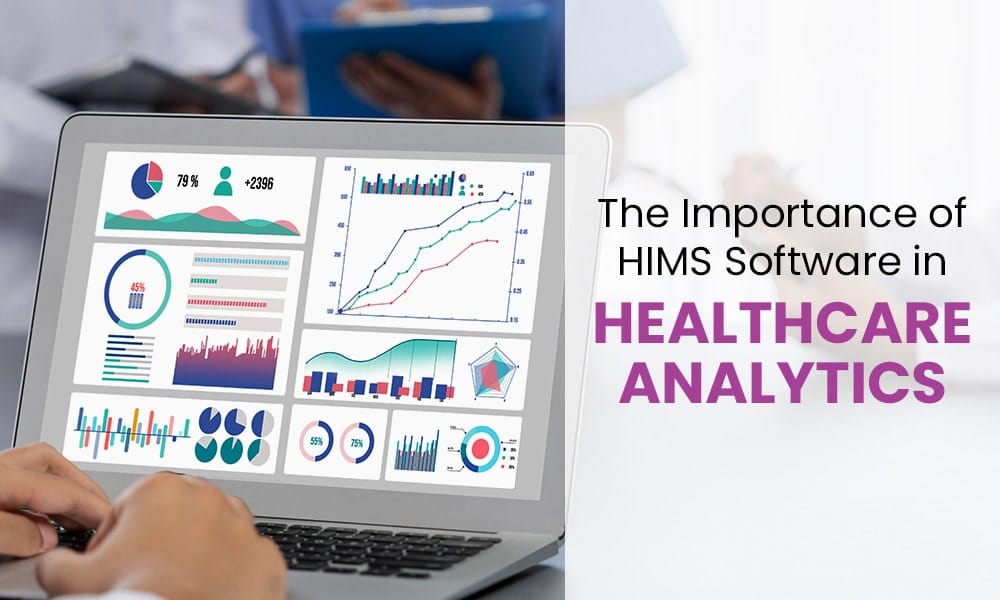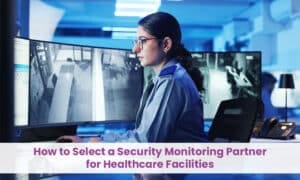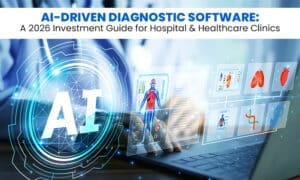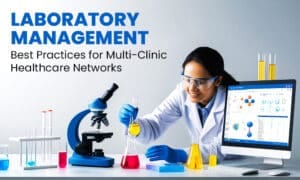
Healthcare today stands at a crucial crossroads. The volume of data generated in hospitals is growing at an exponential rate. From patient histories and diagnostic reports to billing and compliance data, hospitals are dealing with a deluge of information. Here comes HIMS Software in Healthcare Analytics, which plays a vital role in data management and administration.
Despite having access to modern digital tools, a large number of hospitals and clinics still operate in silos. Data remains fragmented across departments, and the insights hidden within that data go untapped. The problem isn’t the absence of data—it’s the absence of systems that transform that data into action.
This is where the real potential of HIMS software lies. Often misunderstood as just an administrative or billing platform, HIMS holds the key to transforming raw data into meaningful insights. Unfortunately, many healthcare facilities remain unaware of its analytical capabilities. They miss out on its role in enhancing clinical decisions, operational efficiency, and patient outcomes.
Also read- Manage Healthcare Professional Scheduling with Smart Software – Ezovion
Understanding Healthcare Analytics: The Foundation for Informed Decisions
In today’s fast-paced healthcare environment, data is no longer a byproduct—it is a strategic asset. Hospitals and clinics generate massive volumes of patient and operational data daily. Without the right tools, this data remains underutilised, trapped in isolated systems. That’s where healthcare analytics step in, offering a structured, outcome-focused approach that turns raw data into actionable insights.
Healthcare analytics refers to the systematic process of collecting, analysing, and interpreting healthcare data to support informed decision-making. From clinical outcomes and financial performance to staffing and resource utilisation, every department in a hospital can benefit from the insights derived through analytics.
The role of a hospital information system becomes critical here. When integrated with analytics capabilities, HIMS transforms into a powerful intelligence engine, guiding hospital leaders, administrators, and clinicians toward better decisions and measurable improvements.
There are three essential types of healthcare analytics that every hospital must understand and adopt:
• Descriptive Analytics: This form answers the question, “What has happened?” It looks at historical data to identify trends, patterns, and benchmarks—such as readmission rates or patient flow metrics.
• Predictive Analytics: It goes a step further to anticipate what is likely to happen in the future. Hospitals can forecast disease outbreaks, predict staffing needs, or assess patient risk levels.
• Prescriptive Analytics: This provides specific recommendations based on predictive insights. It helps leaders decide the best course of action, such as reallocating resources or adjusting treatment protocols.
By leveraging healthcare IT solutions integrated with strong analytics features, hospitals can elevate care quality, enhance efficiency, and meet regulatory demands. Understanding these core analytics types lays the foundation for building a smarter, more responsive healthcare system.
Why Do Hospitals Need Healthcare Analytics?
• Enhancing Patient Care
By predicting potential complications or identifying early warning signs, hospitals can deliver more proactive and personalised care.

• Optimising Operational Efficiency
Data can highlight inefficiencies in workflows, staffing, and equipment use, allowing better resource allocation.
• Reducing Costs
Hospitals can identify areas of waste and implement changes that improve financial performance.
• Improving Clinical Outcomes
Doctors gain support through evidence-based insights, helping them make timely and accurate decisions.
• Navigating Regulatory Compliance
Analytics help institutions stay audit-ready, compliant with changing standards, and transparent with stakeholders.
• Gaining Competitive Advantage
In a rapidly evolving healthcare market, data-driven hospitals stand apart by offering high-quality, efficient, and patient-centred care.
HIMS Software: The Central Nervous System for Healthcare Data
• Beyond Basic Management: The Evolution of HIMS
The traditional view of hospital information systems has changed. Once used primarily for digitising records, HIMS software has evolved into an intelligent, analytics-driven command centre that manages every dimension of hospital operations.
• HIMS as a Data Aggregator
Modern HIMS solutions centralise diverse datasets including:
- Patient demographics
- Clinical notes and diagnosis
- Appointments and billing
- Lab and pharmacy results
- Radiology and surgical histories
This consolidation eliminates departmental silos and creates a unified, accessible data environment.
• Enabling Seamless Data Flow
Hospital analytics software ensures every department speaks the same data language. Through integrations with EHRs, LIS, pharmacy systems, and billing modules, the HIMS ecosystem maintains data consistency. This seamless flow prevents duplication and minimises errors, providing accurate, real-time insights across the organisation.
Also Read- Value-Based Care: Boosting Hospital Efficiency & Outcomes – Ezovion
Impact of Healthcare Analytics in Hospitals
| S.No. | Type of Analytics | Key Functions | Relevant KPIs | Average Improvement (%) |
| 1 | Descriptive Analytics | Analyzes historical data to identify patterns | Patient wait times, Readmission rates, Bed occupancy levels | 20–30% reduction in wait times |
| 2 | Predictive Analytics | Forecasts future trends and patient risks | Disease outbreak predictions, Staff workload forecasting, High-risk patient identification | 15–25% improvement in early intervention |
| 3 | Prescriptive Analytics | Recommends actions based on predictive insights | Treatment protocol optimization, Resource allocation, Operational decision support | 20–40% gain in efficiency and accuracy |
The tables provide a clear and data-driven overview of how healthcare analytics, when integrated with a hospital information system, can drive measurable improvements across hospital operations. Additionally, it categorises analytics into descriptive, predictive, and prescriptive forms, outlining their respective functions, key performance indicators (KPIs), and the quantifiable benefits they offer. For instance, descriptive analytics helps reduce patient wait times by 20–30%, while prescriptive analytics boosts clinical accuracy and operational efficiency by up to 40%.
HIMS Software in Healthcare Analytics: Key Analytics Empowered by HIMS Software
• Patient Outcome and Quality of Care Analysis
HIMS solution for patient outcomes tracks recovery timelines, readmission rates, and treatment success. Hospitals can:
- Detect trends in patient responses to treatment
- Customise care plans based on historical data
- Reduce risks by monitoring infection or complication rates
• Operational Efficiency and Workflow Optimisation
Healthcare analytics solutions with HIMS identify inefficiencies in everyday operations:
- Resource Utilisation: Monitor bed occupancy, optimise shift schedules, and manage equipment usage effectively.
- Appointment and Wait Time Management: Analyse peak hours and adjust workflows to reduce waiting periods.
- Inventory and Supply Chain Management: Predict demand, minimise stockouts, and prevent overstocking.
• Financial Performance and Revenue Cycle Management
Hospitals using HIMS solution for healthcare analytics gain transparency in their revenue lifecycle:
- Billing Accuracy: Automation minimises claim errors and accelerates reimbursement cycles.
- Revenue Leakage Identification: Detect unbilled services or payment denials quickly.
- Cost Control: Understand where money goes and make strategic budget decisions.
• Population Health Management
By analysing health trends across demographics, hospitals can:
- Recognise at-risk groups
- Launch preventive health programs
- Track the success of interventions across specific communities
• Clinical Decision Support
- HIMS software supports physicians with:
- Real-time access to complete patient histories
- Alerts for allergies or drug interactions
- Lab and diagnostic data directly integrated into the clinical dashboard
- Doctors can make precise decisions confidently and swiftly.
The Imperative for 2025–2030: HIMS, AI, and the Future of Patient Engagement
As the healthcare industry evolves rapidly, hospitals and clinics must embrace digital transformation to stay relevant. The next five years will be defined by intelligent automation, data integration, and personalised care—all driven by the powerful convergence of AI and advanced hospital information systems.
• The Dawn of AI and Automation in Healthcare
AI is no longer a futuristic concept—it’s already redefining hospital operations. When seamlessly integrated with HIMS tools, AI brings predictive modeling capabilities that anticipate patient emergencies before they escalate. Machine learning algorithms identify high-risk cases based on real-time data, enabling timely interventions. Automation also eliminates redundant manual tasks, reducing human error and saving valuable time for clinical teams.
Hospitals implementing AI-powered hospital analytics software are setting new industry benchmarks in safety, efficiency, and outcomes.
• Reimagining Doctor-Patient Interaction
Traditionally, doctors have been burdened with excessive paperwork. Now, modern healthcare IT solutions handle routine administrative workflows such as appointment confirmations, patient record updates, and report sharing. This shift allows healthcare providers to focus more on building strong, empathetic relationships with patients.
AI-driven HIMS software for patient outcomes also sends personalised follow-up reminders, medication alerts, and wellness tips—enhancing ongoing engagement and care quality.
• Seamless Patient Journey
From admission to discharge, an integrated hospital information system ensures every touchpoint is smooth and efficient. With features like automated scheduling, real-time treatment updates, and accurate billing, healthcare analytics solutions with HIMS create a cohesive, stress-free experience for patients—ultimately leading to higher satisfaction and better outcomes.
Tangible Benefits: Transforming Healthcare with HIMS Software in Healthcare Analytics
Elevated Patient Satisfaction
Patients value transparency, speed, and personalisation. With HIMS-driven analytics:
- Wait times shrink
- Communication improves
- Billing becomes seamless
- Treatment becomes tailored to individual needs
- Satisfied patients are loyal patients, increasing both reputation and revenue.
Reduced Staff Workload and Burnout
Hospital staff benefit greatly from automation:
- Repetitive tasks like data entry or appointment scheduling disappear
- Nurses and assistants access critical information instantly
- Resources are allocated more efficiently
- As burnout reduces, productivity and morale rise.
Empowering Doctors for Proper Diagnosis and Treatment
- With real-time data, doctors:
- Review patient histories quickly
- Compare treatment responses
- Adjust care plans based on real-time outcomes
This precision not only improves health outcomes but also reduces the chance of complications or medical errors.
Driving Revenue Growth and Financial Health
HIMS boosts financial performance by:
- Reducing denied claims
- Enhancing billing accuracy
- Lowering operational costs
- Increasing patient retention
Hospitals not only save money—they also unlock new revenue streams.
Also read-The Importance of Interoperability in Healthcare IT Solutions
Embracing the Analytical Future with HIMS
Hospital information systems are no longer back-office tools—they’re strategic assets. When powered by AI and integrated with analytics, HIMS becomes the foundation of modern, intelligent healthcare delivery.
Now is the time for hospitals and clinics to rethink their approach. By embracing HIMS software for healthcare analytics, organisations can ensure operational efficiency, financial stability, and better clinical outcomes.
As healthcare evolves, only data-driven institutions will thrive. Investing in the right healthcare IT solutions today paves the way for tomorrow’s success.





